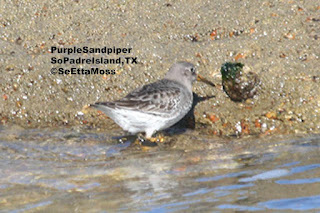This morning I birded Santa Ana National Wildlife Refuge. I have birded it a little this time but today I targetted the Groove-billed Ani, a unique species that I have found every time I have birded the Rio Grande Valley but had missed so far this trip. I had to walk over a mile and a half to get to the area where these birds had recently been seen but it was worth it as I did find one. And it vocalized for several minutes, something I have never heard before. Unfortunatel it did not provide any opportunity for a photo. As I walked the dirt and grass covered paths, I saw a number of spiders spinning their webs or working their prey at face height or higher. Though Santa Ana is best known for it's birding, it provides a unique habitat including tropical deciduous forest as well as spiny shrub habitats, that are home for a variety of wild and interesting critters. This is one of those interesting spiders. It is a Spiny Orb Weaver spider, a beneficial insect. SeEtta



